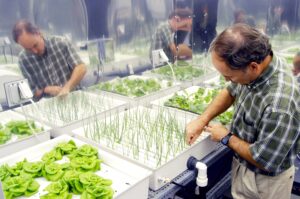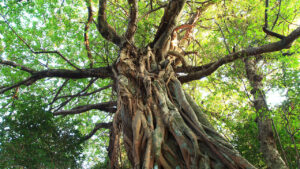The Christmas tree harvest represents a significant seasonal tradition that intertwines economic, environmental, and cultural dimensions. Each year, families across the United States engage in the time-honored practice of selecting their ideal tree from over 3,300 farms, which not only supports local economies but also promotes sustainable agricultural practices. As this tradition evolves, understanding its implications on biodiversity and ecological health becomes increasingly pertinent. What lies beneath the surface of this seemingly simple act of choosing a tree may reveal deeper insights into our relationship with nature and the holiday season itself.
Christmas Tree Production Statistics
As the holiday season approaches, the significance of Christmas tree production becomes increasingly evident, particularly in the United States and Europe.
Approximately 33-36 million Christmas trees are harvested annually in the U.S., while Europe produces 50-60 million trees each year. This thriving industry encompasses over 3,300 tree farm operations across 48 states, employing around 100,000 individuals and generating more than $1 billion in revenue.
Remarkably, more than 98% of these farms engage in sustainable practices, ensuring that for each tree cut, 1-3 new trees are planted. The increasing demand for Christmas trees during the holiday season underscores the importance of these operations, not only for economic contribution but also for their role in promoting sustainable agricultural practices.
Environmental Benefits of Tree Farms
The environmental benefits of tree farms extend far beyond their role in holiday celebrations.
These farms play an essential part in carbon absorption, as evergreen trees convert carbon dioxide into oxygen, greatly improving air quality. By integrating sustainable practices, tree farms actively contribute to biodiversity enhancement.
The continuous cycle of planting new trees guarantees habitat preservation for various wildlife species, while decaying stumps provide vital resources for insects and birds.
In addition, tree farms promote soil health by preventing erosion and maintaining nutrient levels. As a result, they not only support local ecosystems but also mitigate the negative impacts of climate change.
Popular Fir Tree Varieties
Among the various choices available for Christmas trees, fir trees stand out as the most popular selection, with several key varieties favored for their unique characteristics.
The Balsam Fir is renowned for its dark green, aromatic needles and excellent needle retention, making it a holiday favorite.
Similarly, the Fraser Fir boasts a symmetrical shape and sturdy branches, which support ornaments beautifully while retaining freshness longer than many other varieties.
The Noble Fir, with its stunning blue-green needles and pleasant scent, adds elegance to any setting.
Each of these popular fir tree varieties showcases distinct fir tree characteristics, contributing to their preference among consumers seeking the quintessential Christmas tree experience.
Other Tree Varieties for Christmas
While fir trees dominate the Christmas tree market due to their favorable characteristics, a variety of other tree species also serve as festive alternatives.
Pine trees, such as the Afghan and Norway Pines, are popular for their excellent needle retention and delightful scent.
Spruce varieties, including Blue Spruce, are valued for their sturdy branches and longevity, making them suitable for heavy ornaments.
Cedars, particularly the Eastern Red Cedar, offer a unique aroma and seasonal color changes, enriching unique holiday traditions.
Additionally, cypress trees, like the Leyland Cypress, are known for their allergy-friendly qualities and fluffy appearance.
These alternative tree options provide families with diverse choices, enhancing the joy of the Christmas season while catering to individual preferences.
Ecological Role of Trees
Over 3 trillion trees exist globally, playing an indispensable role in maintaining ecological balance and supporting life on Earth. Their myriad functions extend beyond mere aesthetics, contributing greatly to environmental health.
Key aspects include:
- Carbon Sequestration: Trees absorb carbon dioxide, mitigating climate change.
- Biodiversity Support: They provide habitats for countless species, fostering ecosystem diversity.
- Tree Communication: Through root networks and chemical signals, trees share resources and warn each other of threats.
- Soil Stability: Their root systems prevent erosion and enhance soil health.
Understanding these ecological roles underscores the importance of preserving forests and sustainably managing tree resources, ensuring that we maintain the delicate balance of our ecosystems for future generations.
Sustainable Harvesting Practices
Sustainable harvesting practices in the Christmas tree industry are essential for balancing economic viability with environmental stewardship. Over 98% of Christmas tree farms employ sustainable practices, ensuring that for every tree cut down, 1-3 new trees are planted.
This approach not only supports tree farm management but also promotes biodiversity by creating habitats for various wildlife. Additionally, well-managed farms utilize techniques such as crop rotation and integrated pest management, which enhance soil health and reduce chemical use.
Fun Facts About Christmas Trees
The Christmas tree industry is not only a significant economic contributor but also a source of fascinating cultural and historical insights.
Christmas trees hold deep tree symbolism, representing life, renewal, and light during the dark winter months, intertwining with various holiday traditions across cultures.
Here are some fun facts about Christmas trees:
- The tradition of decorating trees dates back to 16th-century Germany.
- Over 98% of Christmas tree farms engage in sustainable practices.
- The tallest living Christmas tree is over 221 feet tall, located in Seattle.
- Fir trees account for about 75% of the Christmas tree market in the U.S.
These intriguing details highlight the importance and rich heritage of Christmas trees in our seasonal celebrations.
Conclusion
The Christmas tree harvest embodies a rich tapestry of tradition, economic importance, and ecological significance. As families begin the annual quest for the perfect tree, they unwittingly partake in a larger narrative of sustainability and environmental stewardship. Each selection not only symbolizes the festive spirit but also supports practices that foster biodiversity. Will the future of Christmas trees continue to intertwine with sustainable methods, or will challenges arise that threaten this cherished holiday ritual? The answer remains to be seen.



